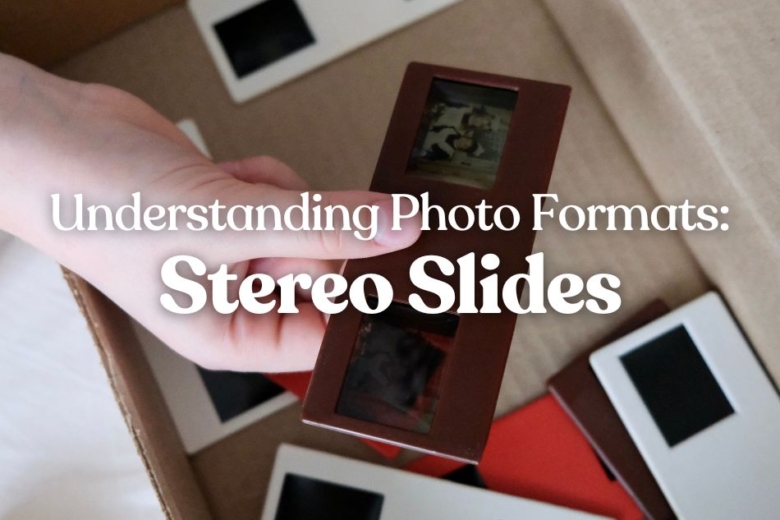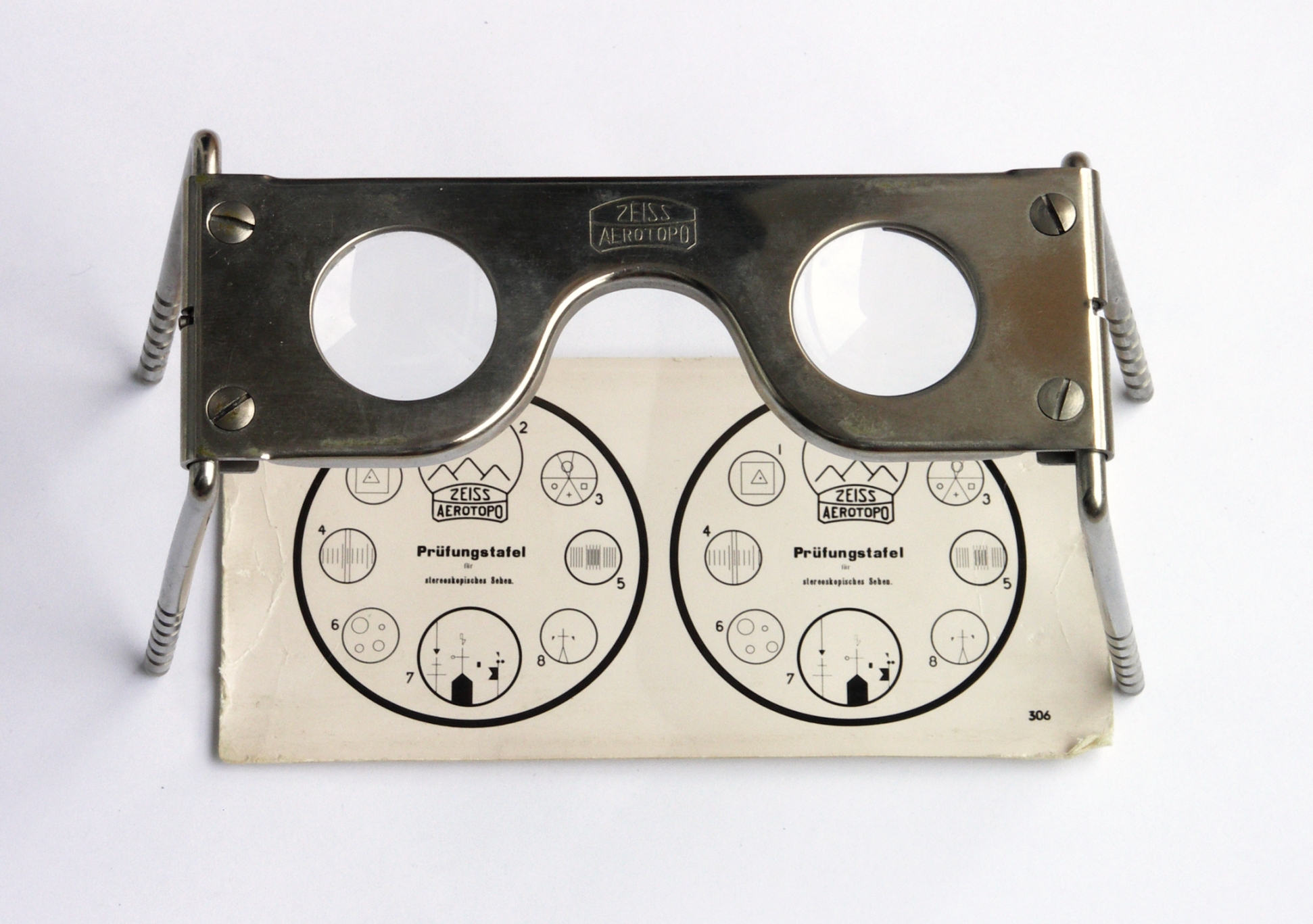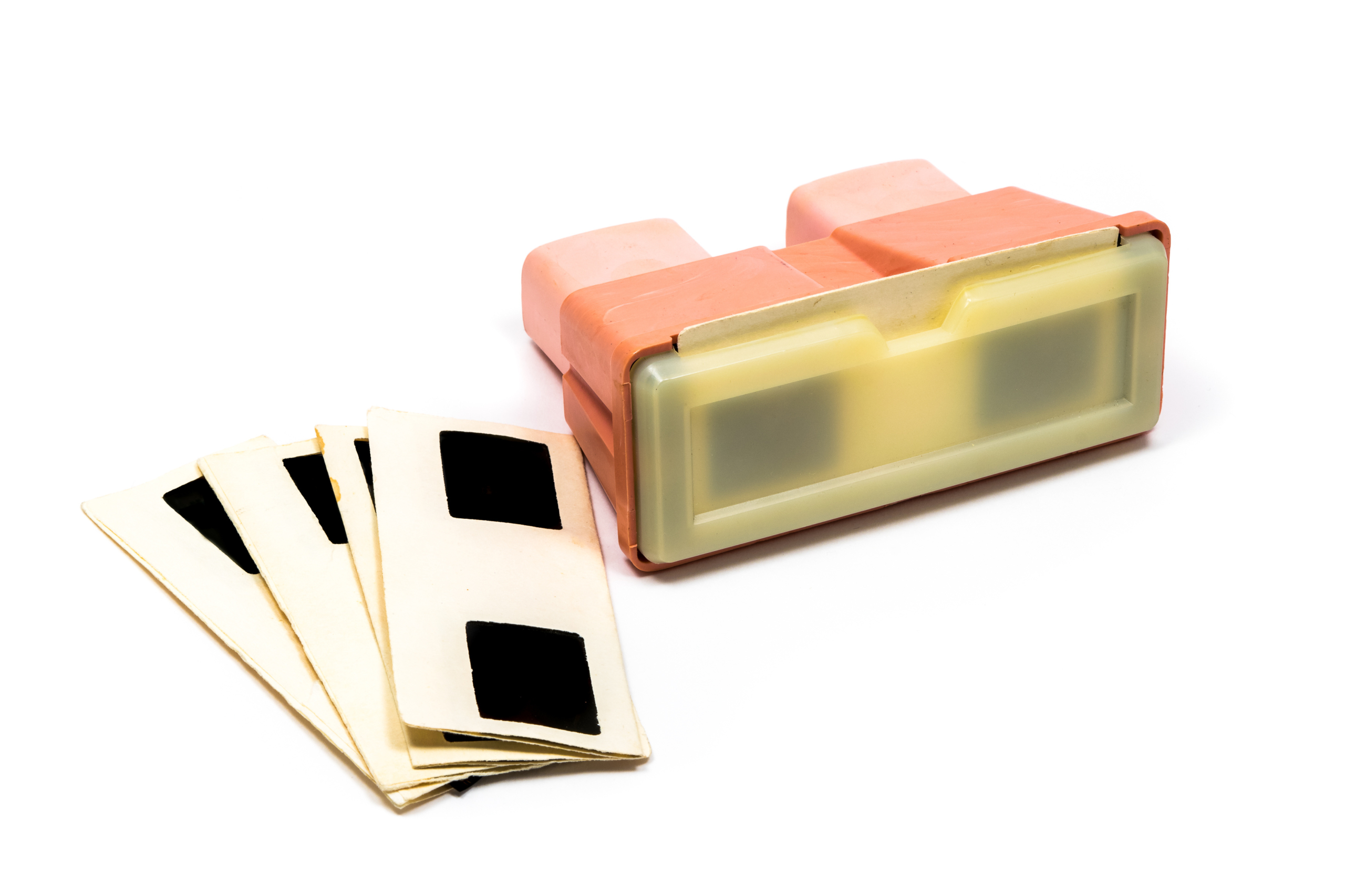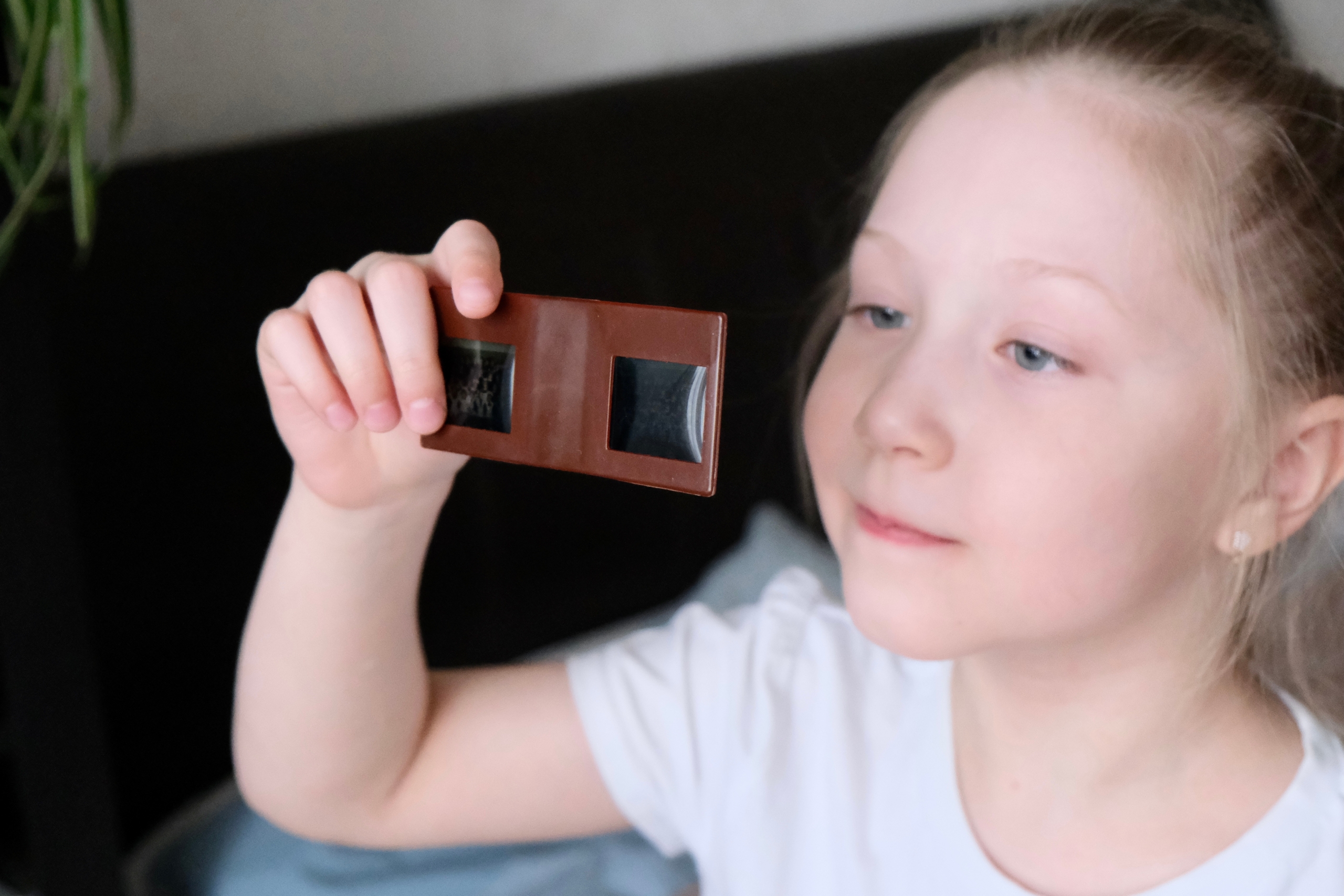As film and photography buffs, we love introducing people to lesser-known photo formats. One of the most interesting ones is stereo slides. They’re not something you find in every household, but you can bet that anyone who has made and viewed stereo slides will want to preserve the memories they hold.
In this post, we explain what stereoscopy is, what stereo slides are, and how this photo format works.
WHAT IS STEREOSCOPY?
Before we talk about stereo slides, we first need to discuss stereoscopy.
Stereoscopy is a special kind of photography that involves taking two images of the same subject from slightly different angles. With a special viewing device (known as a stereoscope), you can then show one image to the left eye and the other to the right eye, creating an illusion of depth — in other words, a 3D image.
Some people can also achieve the effect just by looking at the two images side by side and adjusting their focus, though this often takes practice. How the brain merges the two images to create depth is still largely unknown. Research in this area is ongoing, with universities using MRI scans to compare how the brain reacts to seeing 2D versus 3D images.
WHEN WAS THE STEREOSCOPE INVENTED?
The viewing device known as a stereoscope was first invented in the early 1830s by an Englishman named Sir Charles Wheatstone. It didn’t look like the stereoscopes of today, though. Instead, it used angled mirrors to view two large images on either side of the device.
In 1849, Scotsman Sir David Brewster developed the modern lens-based stereoscope. Using lenses meant the two images could be placed side by side and reduced in size, making the device more compact and easy to use.
WHAT IS A STEREO SLIDE?
A stereo slide, or 3D stereo slide, is a long rectangular slide with two images printed on either end, ready to be inserted into a stereoscope. The slides are made using special twin-lens cameras that take two images simultaneously. These ensure your images are offset in just the right way to produce the three-dimensional effect every time.
One of the two images is actually slightly out of focus, but not enough for the human eye to notice. Stereo slides were especially popular in the 1940s and 1950s, with lots of stereo cameras being made alongside their own slide sizes and special stereoscopes.
HOW DO STEREO SLIDES WORK?
During the 20th century, many stereo slides used Kodachrome slide film, a popular version of film developed by Kodak. It had better color than other brands and a less grainy quality, which helped improve the viewing experience.
The most popular stereo camera in the 1950s was the Stereo Realist, which was produced in 1947 by the David White Company. It’s even credited with starting the stereoscopy boom that followed over the next decade.
One amazing thing about this kind of three-dimensional viewing technique is that it was used before photography was invented. The earliest versions of it used hand-drawn diagrams to create the effect.
Nowadays, you can download apps on your smartphone that let you make your own stereo slides. You can learn to view them without help, using 3D glasses or even VR headsets.
HOW CAN YOU VIEW STEREO SLIDES?
There are many ways to view stereo slides, some more extravagant than others.
LOOK THROUGH THE IMAGES
The first method you can try is to view the two images side by side. Some people can do this naturally by adjusting the way they look at the images. It’s often described as “looking through” the images rather than directly at them.
CROSS YOUR EYES
Another technique is to cross your eyes and look at the images. Both are worth trying, but remember it doesn’t work for everybody.
If you’d prefer to use a tool to view your stereo slides, the most common type is called the stereoscope or slide viewer.
A STEREOSCOPE
These look a little like binoculars. You simply insert your stereo slide and look through the lenses to see the effect. Unlike the freeform viewing techniques, this works for everyone.
A PROJECTOR
There are even projectors for stereo slides which use polarized glasses to project stereo slides in 3D. This isn’t a product that’s sold today, but you can still find old refurbished models for purchase.
CAN YOU SCAN STEREO SLIDES?
Stereo slides are a fairly rare format, so they may not be accepted by every scanning service. It’s also important to note that when digitizing stereo slides, only one of the images is scanned. This means you can preserve the image and the memories that go along with it, but the digitized version will no longer be viewable in 3D.
HOW TO DIGITIZE STEREO SLIDES
There’s no good way to digitize stereo slides yourself. Luckily, at EverPresent, we can digitize stereo slides in various formats. We will only scan one of the images, but remember that your originals will be returned to you so you can keep viewing them in 3D for as long as they last. If you’re interested in digitizing your stereo slides, you can get in touch with us here.





